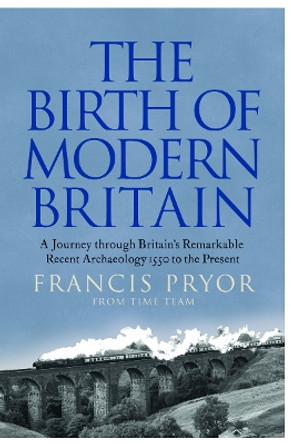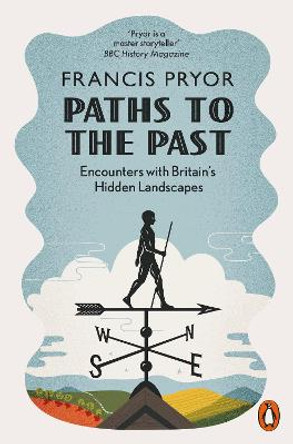Description
As in 'Britain B.C.' and 'Britain A.D.' (also accompanied by Channel 4 series), eminent archaeologist Francis Pryor challenges familiar historical views of the Middle Ages by examining fresh evidence from the ground.
The term 'Middle Ages' suggests a time between two other ages: a period when nothing much happened. In his radical reassessment, Francis Pryor shows that this is very far from the truth, and that the Middle Ages (approximately 800-1550) were actually the time when the modern world was born. This was when Britain moved from Late Antiquity into a world we can recognize as more or less familiar: roads and parishes became fixed; familiar institutions, such as the church and local government, came into being; industry became truly industrial; and international trade was now a routine process.
Archaeology shows that the Middle Ages were far from static. Based on everyday, often humdrum evidence, it demonstrates that the later agricultural and industrial revolutions were not that unexpected, given what we now know of the later medieval period. Similarly, the explosion of British maritime power in the late 1700s had roots in the 15th century.
The book stresses continuous development at the expense of 'revolution', though the Black Death (1348), which killed a third of the population, did have a profound effect in loosening the grip of the feudal system. Labour became scarce and workers gained power; land became more available and the move to modern farming began.
The Middle Ages can now be seen in a fresh light as an era of great inventiveness, as the author examines such topics as 'upward mobility'; the power of the Church; the role of the Guilds as precursors of trade unions; the transport infrastructure of roads, bridges and shipbuilders; and the increase in iron production.
About the Author
Dr Francis Pryor has spent thirty years studying the prehistory of the Fens. He has excavated sites as diverse as Bronze Age farms, field systems and entire Iron Age villages. From 1980 he turned his attention to pre-Roman religion and has excavated barrows, 'henges', and a large ceremonial centre dating to 3800 bc. In 1982, while working in a drainage dyke at Flag Fen, on the outskirts of Peterborough, he discovered the waterlogged timbers of a Bronze Age religious site. In 1987, with his wife Maisie Taylor, he set up the Fenland Archaeological Trust, which opened Flag Fen to the public. He appears frequently on TV's 'Time Team' and is the author of 'Seahenge', as well as 'Britain B.C.' and 'Britain A.D.', which he adapted and presented for Channel 4.
Reviews
'Pryor's performance in this book remains a hugely entertaining one.' Sunday Telegraph
'[The book lets in] new and fascinating light.' Scotsman
'Francis Pryor is that rare combination of a first-rate working archaeologist and a good writer, with priceless ability of being able to explain complex ideas clearly...Herein lies a great pleasure of Pryor's writing...The author's eclectic interests and his passion for a past he considers deeply relevant to the present drive "Britain in the Middle Ages". This is popular archaeology at its best: engaging, knowledgeable and provocative, driven by the author's zestful, insatiable curiosity. One can only hope that Pryor makes good his threat to write a book on the archaeology of the 20th century. It will be an eye-opener.'' Times Higher Educational Supplement
Book Information
ISBN 9780007203628
Author Francis Pryor
Format Paperback
Page Count 320
Imprint HarperPerennial
Publisher HarperCollins Publishers
Weight(grams) 280g
Dimensions(mm) 198mm * 129mm * 24mm








